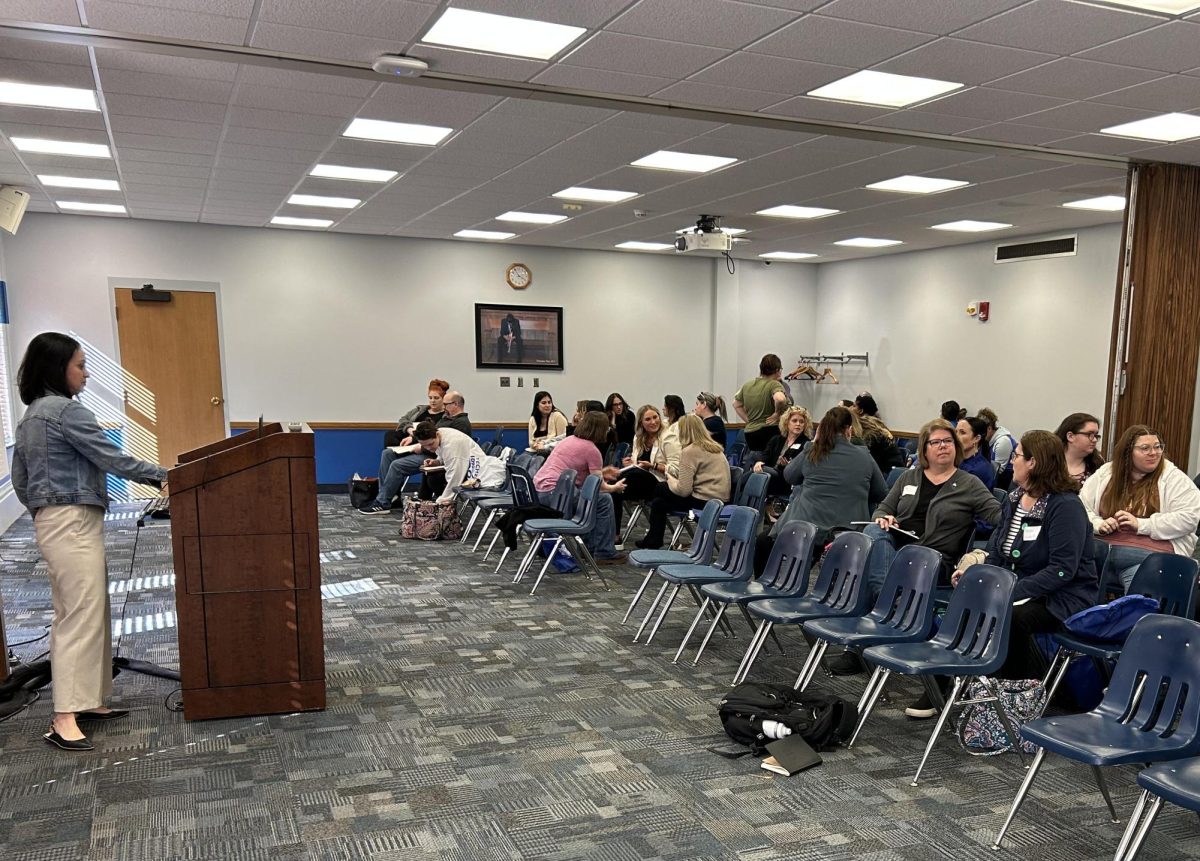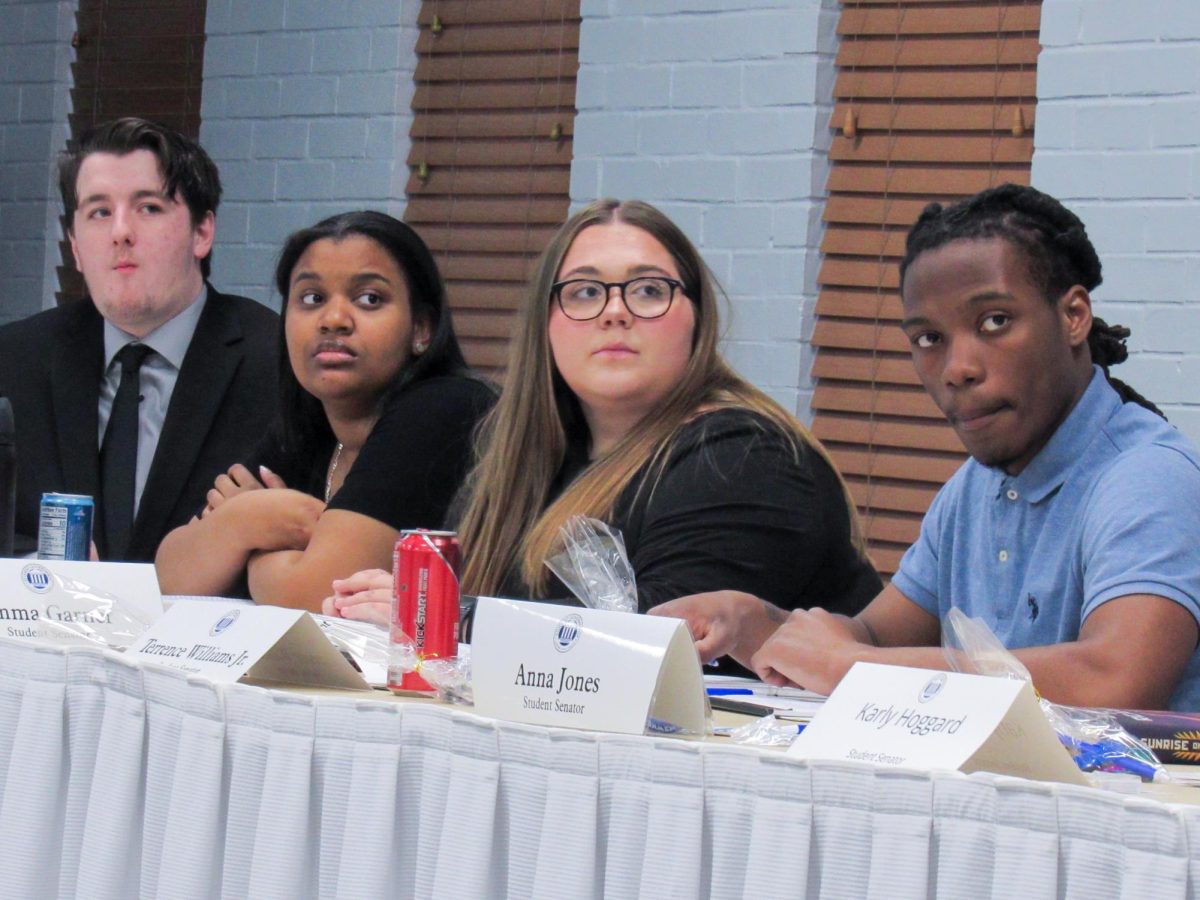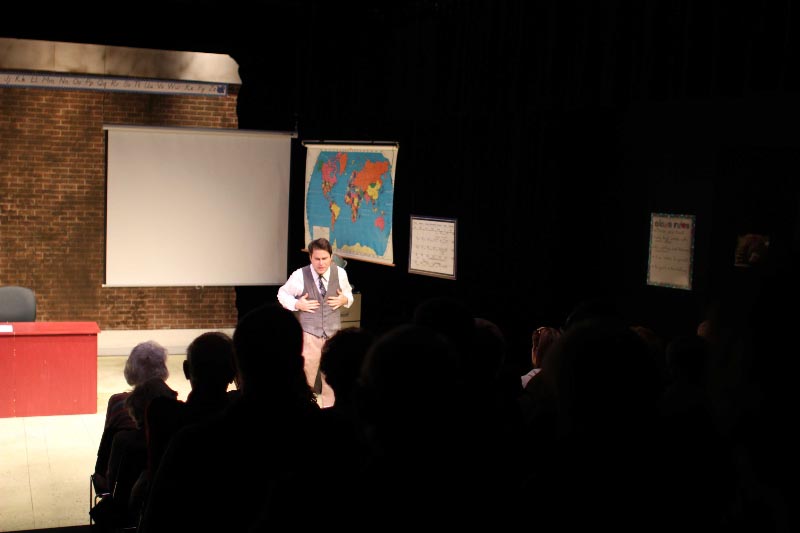Column: What 1,652 skeptics do in Las Vegas in July
The ground floor of South Point Casino in Las Vegas is a sea of gullibility. Located a few miles south of the Strip, the Mediterranean palace’s gilded windows reflect an undistinguished swath of Las Vegas Boulevard that give it an air of opulence it could never expect if it were seated among its better known brethren to the north.
But inside, it’s like any other casino: vacationing hopefuls feeding pensions and paychecks into slot machines and onto tables, confident the next $500 will come back to them tenfold.
So it was with a hint of irony that the world’s largest gathering of self-professed skeptics took place in the conference center on the second floor July 14-17. The Amazing Meeting (TAM), bills itself as “an annual celebration of science, skepticism and critical thinking.” More than 1,600 skeptics attended the conference, most referring to it, not just as a celebration, but as a movement.
Society (and the Internet) teems with individuals and groups claiming to be “skeptics.” For example, there are “climate skeptics” who don’t believe in climate science, “Darwin/evolution skeptics” who don’t believe in biology or paleontology, “vaccine skeptics” who don’t believe in modern medicine and “9/11 skeptics” who don’t believe in anything that contradicts their assertion that the government planned the 9/11 attacks.
The skeptics at TAM were generally skeptical of the skeptics listed above, but also about homeopathic medicine, ghosts, dowsing, God, faith healing, psychics, UFOs and almost anything having to do with the supernatural, the pseudo-scientific or Deepak Chopra.
The majority of the weekend was devoted to lectures and workshops, often led by prominent scientists and authors like astrophysicist Neil deGrasse Tyson, host of the PBS series NOVA ScienceNow and director of the Hayden Planetarium; evolutionary biologist Richard Dawkins, author of several best-sellers and probably the worlds best-known atheist; and Bill Nye, whose television show Bill Nye the Science Guy introduced millions of youngsters to the wonders of science in the mid-’90s.
It is neither a coincidence nor an act of God that these ritual debunkers meet at TAM. The Amazing Meeting is the brainchild of James “The Amazing” Randi, who gained international notoriety in the early ’70s when he debunked the “mystical” abilities of Uri Geller, a self-proclaimed psychic who used his superior mental abilities to bend spoons, of all things.
Randi’s decades-long battle against purveyors of pseudoscience, or “flim-flam” as he calls it, led him to found the James Randi Educational Foundation (JREF) in 1996.
TAM is clearly Randi’s party. Besides being named-or maybe nicknamed-after him, speakers and attendees expressed nothing but the kindest words and highest praise for this godfather of the movement. All the reverence and devotion garnered by The Amazing One can come off as a kind of atheist idolatry. But meeting Randi, it’s not hard to understand why he is so beloved by his fellow skeptics.
An experienced magician, perhaps Randi greatest illusion is not of his own design. His 82-year-old body hunches well below 5 feet and his long white beard, reminiscent of an elderly Charles Darwin, projects a bit as he looks up at whomever he is talking to. But watching him amble about all weekend, tirelessly hugging his guests, telling stories and signing autographs-listening to the passion he still has for his work-it’s easy to forget how frail his shell appears to be.
There’s also a child-like humility about the way he describes TAM’s progression from its beginnings in Ft. Lauderdale, Fla.
“When we pulled off the first one, there were 88 people,” Randi said. “I thought, ‘Wow, we can attract 88 people.’ At the foundation we could only accommodate about 30 people, so it was very encouraging. There were 88 people 10 years ago and here we are at 1,652 hungry folks out there who came to learn and to teach and to participate in The Amazing Meeting. I feel very flattered by that.”
Randi also seemed as star struck by the speakers headlining TAM as any other attendee.
“Two days ago I opened up my hotel door to go downstairs before anyone had really arrived, and Richard Dawkins was standing at the door looking at his key and trying to figure out if this was his room,” he said. “I simply said, ‘No, wrong room,’ and shut the door. I heard laughter on the other side and was able to open it again and he didn’t hit me. But to attract people like Richard Dawkins and Neal deGrasse Tyson-they actually came here, and because they wanted to talk to my people. That is so flattering. And it’s scary in a way, because these are people that I’ve almost worshiped for years now.”
Beyond being the organizing force behind TAM, the JREF also offer a $1 million prize to anyone who can demonstrate a supernatural, paranormal or occult ability under agreed upon scientific criteria. There are dozens of prizes offered by groups around the world for evidence of the paranormal. The JREF’s is the largest and best known. Many have taken Randi up on the $1 million challenge, but they never do better than chance would predict if they were simply guessing.
When Randi talks about exposing Uri Geller as a fraud, he exudes an excited air of accomplishment. But his debunking is not for his own self-righteous amusement. Though the million-dollar challenge is central to the JREF’s work, Randi hardly enjoys doing it.
“None of it is fun, when you come right down to it,” he said. “Most of it deals with people who are self-deluded and it’s a disappointment to them. It’s rather sad in many cases.”
This distinction is what makes the idea of a “skeptic movement” possible. The focus of TAM was the promotion of reason and science, not self-congratulation or belittlement.
It’s tempting to assume skeptics are cynical nihilists-grumpy naysayers who believe in nothing. Naysayers they may be, but only against those things that they feel distorts what they believe in most: science and reality.
The vast majority of speakers, and certainly the most well known, were scientists. In a world they see as increasingly anti-science, they came to call for defensive action. They were defending against beliefs that have far greater consequences than that of a spoon-bending psychic.
Eugenie Scott has been on the front line of this battle for decades. In 1987 she became executive director for the National Center for Science Education, the nation’s leading organization defending the teaching of evolution in public schools.
Anyone under the illusion that the matter of creationism is the classroom has been settled would be shocked to learn of the tireless efforts of Scott and the NCSE. They served as educational and scientific consultants in the famous Dover trial in 2005, the first time a case was brought before the Supreme Court regarding the teaching of “intelligent design,” rather than creationism. The Supreme Court decided that intelligent design was indeed a form of creationism and that teaching it violated the Establishment Clause of the First Amendment. Scott says that did not stop the efforts of creationists.
“It’s the old Red Queen, you run as hard as you can to stay in the same place,” she said. “They are getting much smarter in how they couch their legislation or regulations that school boards might try to set up. What we’re dealing with now is a very different kind of creationism than we dealt with 25 years ago. When I started working at NCSE, it was just creation science. Then it was creation science and intelligent design. Now it’s creation science, intelligent design and the evidence against evolution, which is a very clever approach. And that’s what most of the legislation has really been about. It’s really back-door creationism.”
Scott said the phrase “evidence against evolution” comes up in a lot of legislation. Though there is no real controversy over evolution and creationism in the scientific community, creationists demand that schools should “teach the controversy.”
“It’s so persuasive,” she said. “It fits so nicely with American ideals about fairness and free speech and all this kind of good stuff. I’m a big supporter of free speech. But these bills are not about free speech. These bills are about teaching kids that evolution is crappy science so that they will come to the conclusion that God must have gone, ‘Poof,’ and created everything specially.
“It’s not the science teachers or scientists who are calling for this,” she added. “This is the politicization of education. And that is a serious issue that we really ought to oppose very strongly.”
When this debate takes place in Congress, the media or even school board meetings, it wastes no time getting to a boil. It’s surprising, then, that one of the most influential voices in that debate comes from such a pleasant person. Scott is equal parts passion and compassion as she speaks of one of the most divisive debates in our society.
“You really need to clearly understand that you are dealing with other human beings, you’re not dealing with stereotypes,” she said. “The religious conservatives who don’t want their kids to be taught evolution, the ones coming to school board meeting and who are really anguished about this, have very serious issues that they are concerned about. You have to walk in their shoes in order to really understand why they feel so strongly about this. If you can have that empathy, then I think you’ve got a better chance to come up with the arguments that, if they don’t find persuasive, they will at least consider.”
Every person interviewed remarked on the dramatic change they had seen at TAM of the years: the crowd is getting younger. But as Scott herself admitted, this is not a product of a more skeptical education.
“I think the changing demographics of the skeptic movement is largely a function of social media and the rise of the Internet which is primarily used by younger people,” Scott said.
More than anything, the internet has brought in the younger crowd. To say this community is one of the most podcast-savvy in the world is not an outrageous claim. Type “skeptic” into iTunes and it will return a litany of podcasts. The hosts of the top 20 podcasts most likely spoke at TAM and the rest almost certainly attended.
Pamela Gay is an astronomer at Southern Illinois University Edwardsville and co-host of Astronomy Cast, a podcast about space and skepticism. Her speech calling for science activism was one of the most popular at the conference.
“One of the things that fascinates me, not just in skepticism but in a lot of things, is more engagement by young people,” she said. “I think our best hope is all of the videos that are coming out, all of the podcasts, YouTube, Picasso all of these places. Anywhere you can put pictures and video, hopefully we can put inspiration.”
It turns out Gay and Scott were onto something; the younger TAM attendees seemed to find out about it on the Internet, primarily through blogs and podcasts.
Michel Trottier-Mcdonald was one of many “first TAMers.” Trottier-Mcdonald is one of those guys who make the rest of us look bad in comparison. The handsome French-Canadian physicist is earning his Ph.D. at Simon Fraser University in Burnaby, British Columbia, Canada. He’s also working with physicists at the Large Hadron Collider, one of the largest and most expensive scientific instruments ever built, to try to figure out the origin of the universe. And all this at the tender age of 24.
Trottier-Mcdonald first found out about TAM on the Bad Astronomy blog, whose author, Phil Plait, spoke and sat on panels at the conference. Trottier-Mcdonald’s description of his TAM experience is more fun to read with a French-Canadian accent:
“I think it was an awesome event,” He said. “I never attended an awesome conference like that before. Some moments of it were just perfect, like Bill Nye’s talk, Neil deGrasse Tyson’s talk. I’m a physicist so I really like these talks.”
Annie Seegmiller, 25, a high school teacher from Trescott, ME, became a first TAMer after hearing about it on The Skeptic’s Guide to the Universe podcast, and got to watch the podcast live at the conference.
“It was incredible,” Seegmiller said. “I feel like I don’t get excited about celebrities but I get really excited about some of these people here-to put faces to voices I’ve heard or read articles by, to meet these people who have been really influential to my life and my thinking for the last several years. I grew up on Bill Nye, so it was really exciting.”
Perhaps the skeptic movement is flourishing on the Internet because the Web is also a hotbed of nonsense. But it gives a very democratic quality to the movement. There are plenty of disagreements within it, mostly about messaging. Core to TAM was an ongoing debate about whether you win more minds with skeptical honey than skeptical vinegar; between a softer approach that doesn’t attack and embarrass people and a more direct line that cuts through the fat.
But most seemed to agree on one important point: TAM might be nice for skeptics, but it takes more than agreement among peers to make a difference in the world. Randi said he’s optimistic about the future of the movement and laid out how it can best bring about change:
“If we can get to legislatures and get to law officials, to federal and local officials who can have something to do with it,” Randi said, “if we can get them to act and ignore the constituents who say we have to have Jesus in everything and who say, ‘That’s not necessarily superstition, my grandmother told me that was true.’ You’ve got to get science known as a way of life, a way of thinking, a way of conducting ourselves. Logic, rationality and science have got to come to the forefront. There is not enough value placed in this country, particularly, on good science and rationality.”
Dave Balson is a senior journalism major.
He can be reached at 581-2812 or
DENopinions@gmail.com











![[Thumbnail Edition] Junior right-handed Pitcher Lukas Touma catches at the game against Bradley University Tuesday](https://www.dailyeasternnews.com/wp-content/uploads/2025/03/MBSN_14_O-e1743293284377-1200x670.jpg)

![[Thumbnail Edition] Eastern Illinois University baseball senior utility player Tyler Castro fields a ground ball during the team's first intrasquad scrimmage of the season on Jan. 31.](https://www.dailyeasternnews.com/wp-content/uploads/2025/03/BB_01_O-e1742874760130-1-e1742907504722-1200x911.jpg)
![[Thumbnail Edition] Senior Foward Macy McGlone, getsw the ball and gets the point during the first half of the game aginst Western Illinois University,, Eastern Illinois University Lost to Western Illinois University Thursday March 6 20205, 78-75 EIU lost making it the end of their season](https://www.dailyeasternnews.com/wp-content/uploads/2025/03/WBB_OVC_03_O-1-e1743361637111-1200x614.jpg)





































![The Weeklings lead guitarist John Merjave [Left] and guitarist Bob Burger [Right] perform "I Am the Walrus" at The Weeklings Beatles Bash concert in the Dvorak Concert Hall on Saturday.](https://www.dailyeasternnews.com/wp-content/uploads/2025/03/WL_01_O-1200x900.jpg)
![The team listens as its captain Patience Cox [Number 25] lectures to them about what's appropriate to talk about through practice during "The Wolves" on Thursday, March 6, in the Black Box Theatre in the Doudna Fine Arts Center in Charleston, Ill.](https://www.dailyeasternnews.com/wp-content/uploads/2025/03/WolvesPre-12-1200x800.jpg)














